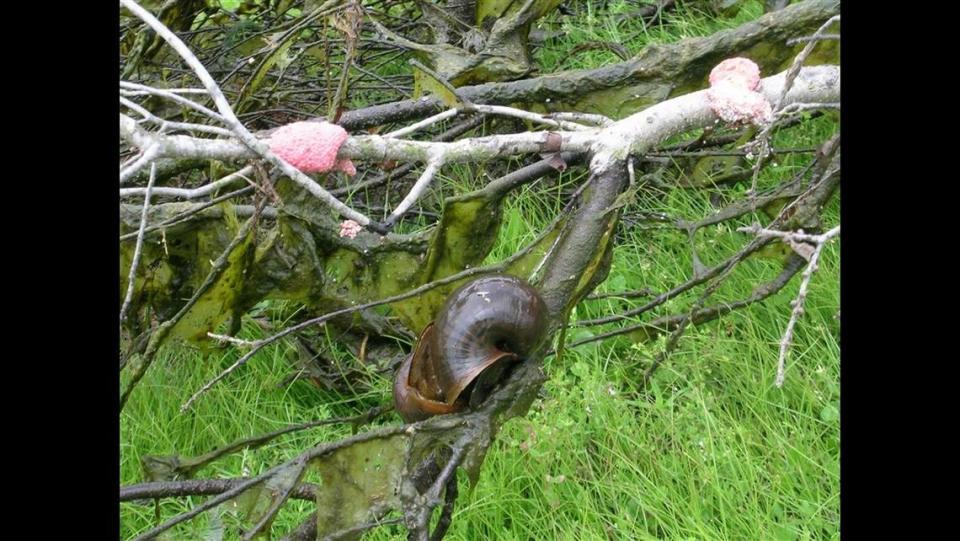Toxic invasive snails that grow to 6 inches found breeding along North Carolina river
A toxic species of invasive snails has been discovered in North Carolina for the first time, and they’re big, according to a warning issued by the N.C. Wildlife Resources Commission.
Apple snail shells grow to six inches and the squishy creatures produce equally alarming clusters of bright pink eggs, experts say.
They are native to South America, but a fast-spreading population is now thriving along the Lumber River in Lumberton, about 95 miles south of Raleigh, officials said in a news release.
“This is the first known population of apple snails in North Carolina,” the commission reports.
“Apple snails can present human health risks. They may carry rat lungworm, which can cause a potentially fatal disease in humans if the snails are eaten raw or under cooked. The snail’s egg masses also contain a toxin which can cause skin and eye rashes.”

A “concerned citizen” discovered the snails after noting mysterious egg clusters were showing up along the Lumber River, the commission said.
State investigators collected samples and confirmed the eggs were indeed apple snails, the commission said.
“Subsequent surveys by an NCWRC biologist detected adult snails and eggs near the I-95 bridge crossing of the Lumber River, at the High Hill Boating Access Area, and in Fivemile Branch, a tributary to the Lumber River,” officials said.
It is suspected the snails found their way into the United States via the aquarium trade and populations are now “established in Florida, Georgia, Texas, and Louisiana,” the U.S. Geological Survey reports.
The snails have also been found in eastern South Carolina retention ponds, the S.C. Department of Natural Resources reports.
Apple snails produce “distinctive large, bright pink egg clusters” along streams, rivers or ponds, experts say.
“When the eggs hatch, the young snails drop into the water, where they grow into fully aquatic adults, reaching 2 to 6 inches in size (much larger than any of our native aquatic snails),” officials say.
“Female snails lay eggs as often as once a week, which allows populations to grow and spread rapidly once established.”
Along with being toxic, officials say, the snails are an environmental threat, grazing on native plants and feeding on the eggs of amphibians.
The commission is now asking for the public’s help in tracking how far the snails have spread in North Carolina.
“Please report suspected apple snail or an egg mass online via the Aquatic Nuisance Species Reporting Tool and include a photograph and location where they were found,” the commission says.
“After documenting the location, egg masses can be destroyed by crushing them and scraping them into the water with any implement such as a stick or a boat paddle, making sure the eggs sink, while avoiding touching them with bare skin. Adult snails can be destroyed by crushing or freezing.”
Historic WWII shipwrecks off North Carolina attracting invasive lionfish, NOAA finds
Wayward python found dangling from engine of vehicle in Kannapolis, NC police say
Toxic invasive tree frog hitched ride in car traveling from Florida to North Carolina

